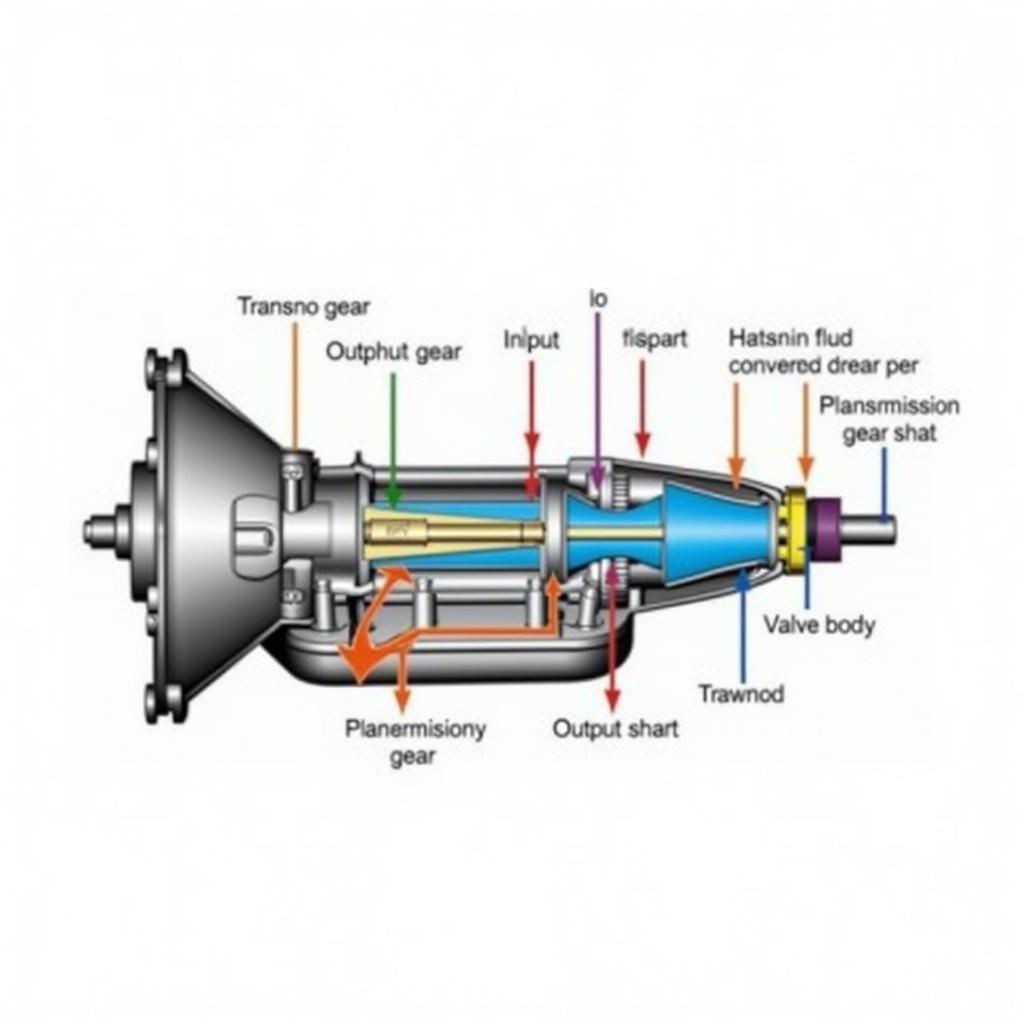Transmission problems can be a real headache, leaving you stranded or facing hefty repair bills. Knowing the signs early on can save you both time and money. This article will guide you through the common indicators of transmission trouble, helping you answer the question: How Do I Know My Car Has Problems With Transmission?
Recognizing the Red Flags: Common Transmission Issues
Several telltale signs can point to a failing transmission. These range from subtle changes in performance to more obvious malfunctions. Ignoring these early warnings can exacerbate the problem, leading to more extensive and costly repairs down the line. So, let’s delve into the common symptoms:
- Slipping Gears: This is perhaps the most noticeable sign. It feels as though your car is momentarily in neutral, even though you’re actively accelerating. The engine might rev up without a corresponding increase in speed.
- Rough Shifting: If shifting gears feels clunky, jerky, or resistant, your transmission could be struggling. This might be accompanied by a grinding or clunking sound.
- Delayed Engagement: A healthy transmission engages quickly when you shift into gear. A noticeable delay between shifting and the car responding can indicate a problem.
- Fluid Leaks: Transmission fluid is vital for lubrication and cooling. Check for leaks under your car. Transmission fluid is typically red and has a slightly sweet smell.
- Burning Smell: A burning smell emanating from your car could signal overheating transmission fluid. This is a serious issue that requires immediate attention.
- Check Engine Light: While the check engine light can illuminate for various reasons, it can also indicate transmission problems. Get your car diagnosed with an OBD-II scanner to pinpoint the specific issue.
 Transmission Fluid Leak Under Car
Transmission Fluid Leak Under Car
If your car exhibits any of these symptoms, it’s crucial to seek professional help. Continuing to drive with a faulty transmission can worsen the damage significantly. Check out our article on common problems with smart cars for further insights into potential vehicle issues.
How Do I Know My Car Has Problems With Transmission? A Deeper Dive
While the common symptoms mentioned above provide a good starting point, understanding the underlying mechanisms can further clarify the issue. The transmission is a complex system, and different components can fail in various ways.
Identifying Specific Transmission Problems:
- Torque Converter Issues: The torque converter connects the engine to the transmission. Problems here can manifest as slippage, shuddering, or a lack of power.
- Solenoid Problems: Solenoids control the flow of transmission fluid. Malfunctioning solenoids can cause rough shifting or delayed engagement.
- Clutch Problems (Manual Transmissions): A worn-out clutch in a manual transmission can make it difficult to shift gears or cause the car to stall.
 Car Transmission Diagram
Car Transmission Diagram
“Regular maintenance is crucial for transmission health,” advises Johnathan Miller, a seasoned automotive engineer with over 20 years of experience. “Fluid changes, filter replacements, and inspections can prevent many common transmission problems.” You might be interested in reading about spells for car problems if you are looking for unconventional solutions.
What to Do If You Suspect Transmission Trouble
If you think your car has transmission problems, don’t delay seeking professional help. Continuing to drive with a damaged transmission can lead to more extensive and costly repairs.
- Stop Driving: As soon as you notice any of the symptoms mentioned above, stop driving the vehicle to prevent further damage.
- Consult a Mechanic: Take your car to a qualified mechanic specializing in transmission repair. They can accurately diagnose the issue and recommend the appropriate course of action.
- Get a Second Opinion: If you’re unsure about the diagnosis or the recommended repairs, it’s always a good idea to get a second opinion from another reputable mechanic.
- Consider Repair Options: Depending on the severity of the damage, you might have several repair options, including rebuilding or replacing the transmission. Discuss the pros and cons of each option with your mechanic.
“Ignoring transmission problems can lead to catastrophic failure,” warns Sarah Thompson, a certified automotive technician. “Early diagnosis and prompt repairs are essential to minimize the damage and keep your car on the road.” For more tips on dealing with car issues, read our article on car problems chloe foster. If you are looking for reliable vehicles, see our recommendations for the best cars with least problems.
Conclusion: Addressing Transmission Problems Head-On
Knowing how do I know my car has problems with transmission is the first step towards protecting your vehicle and avoiding costly repairs. By understanding the common symptoms and seeking professional help promptly, you can ensure your car’s transmission stays in good working order for years to come. Connect with us at AutoTipPro for further assistance. Our phone number is +1 (641) 206-8880 and our office is located at 500 N St Mary’s St, San Antonio, TX 78205, United States. We’re here to help you navigate any car troubles you might encounter.





Leave a Reply